Put your growth on autopilot
GrowSurf is modern referral program software that helps product and marketing teams launch an in-product customer referral program in days, not weeks. Start your free trial today.
Image source: By Artem Podrez, licensed under Free to Use
Referral programs have become increasingly popular in the past few years.
It makes sense.
They offer customers the opportunity to earn money from their trusted friends and family members. The more people you refer, the more money you earn.
And every well-run referral marketing program has several essential ingredients, one of which is referral codes.
But what are they, and how do they differ from referral links? What are some of the best ways to use them in your referral marketing campaigns?
In this extensive guide, we're going to look at six different referral code examples from real-life companies to learn the best practices for creating referral codes.
We're also going to learn:
Let's dive in!
A referral code is a unique combination of letters and numbers that acts as a special ID.
Companies use these referral codes to track the origin of a referral to connect the referrals to the customer who sent them in the first place. Without a referral code, companies would have no way of knowing who sent the referral and who deserves a reward.
That's why referral codes are assigned to every referrer when they join a program. Once the referred customer completes the desired action (like signing up for a paid plan), the referrer will receive their reward. In a case of a two-sided referral program, both the referrer and the referred customer get a reward.
Here's what a referral code from Uber looks like:
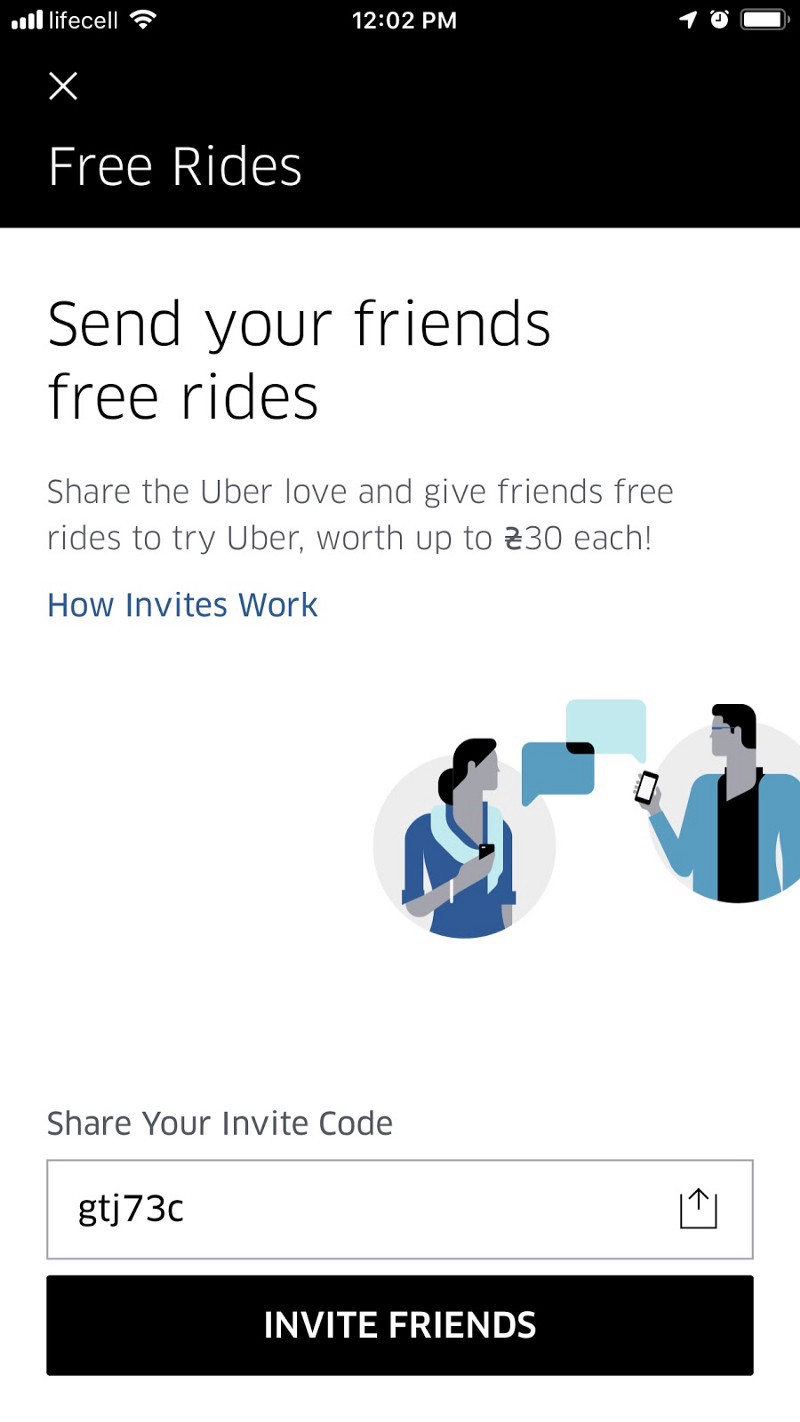
Image source: Uber referral program
As you can see from the example above, the referral code is a simple combination of letters and numbers. This is just one example of what referral codes can look like. In some cases, they can contain only numbers, such as the referrer's name or random numbers.
In other cases, a referral code can be part of a referral link. We'll discuss the difference between referral codes and links in more detail in the following chapter, so bear with us.
Although the two terms may be used interchangeably, there's a slight difference between them. As we mentioned earlier, referral codes are a combination of letters and numbers that the referred customer must type in manually to unlock a reward, and they're usually shorter.
On the other hand, a referral link contains the URL of the landing page the referred customer will be brought to upon clicking on the link.
Referral links generally contain a referral code at the end that helps companies track who the referral came from. Instead of manually typing in the code, referrers can easily share the link via their preferred communication channel with a friend, making the entire experience of referral programs effortless.
Here's an example of a referral code within a referral link:
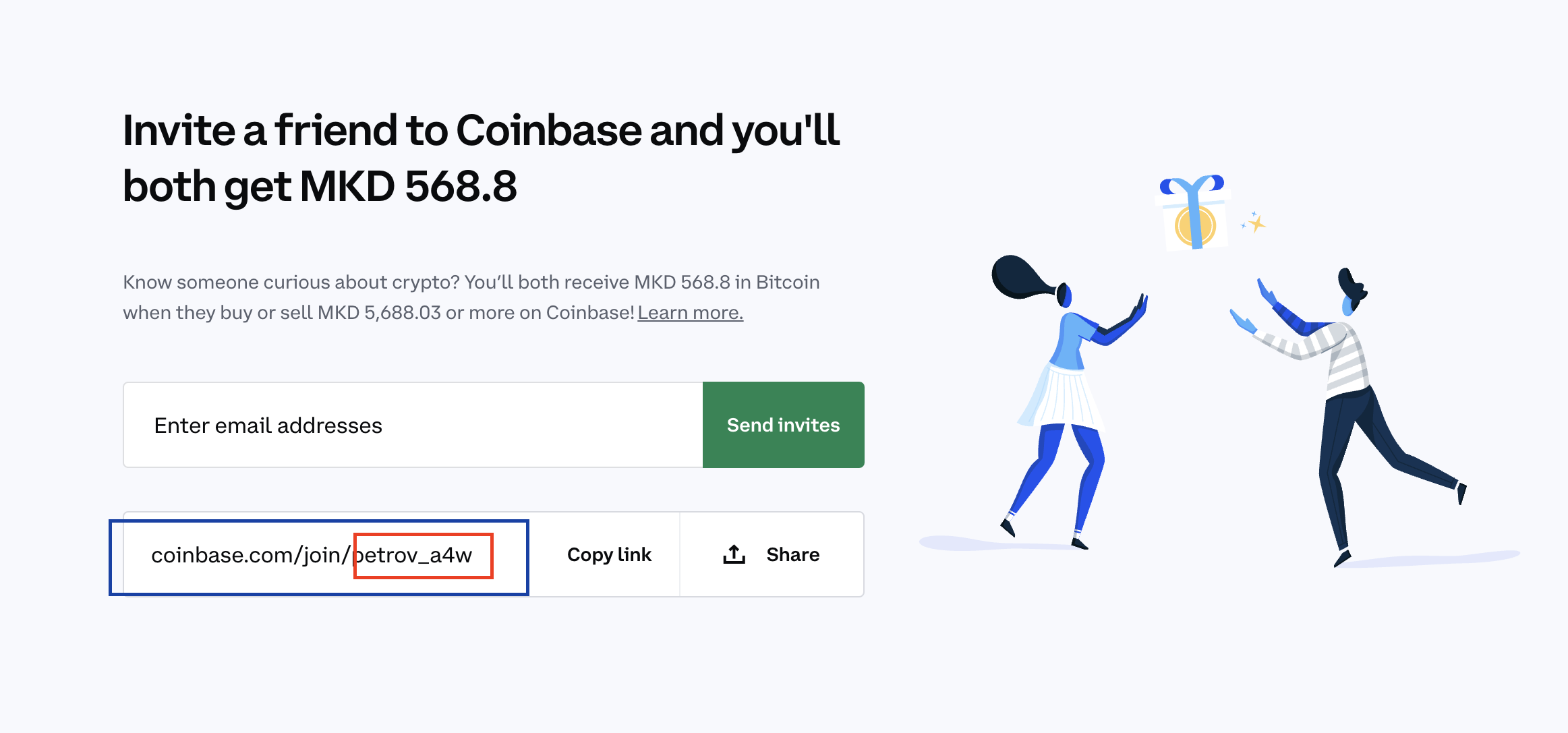
Image source: Coinbase referral program
The link in the blue box is the referral link, while the text in the red box is the actual referral code.
Now that we know the difference between the two, it's time to see how referral codes work exactly.
Whether the referral code will contain numbers, letters, or both, is entirely up to you and what best works for you and your business. However, there are some best practices to follow:
Referral codes make referral programs more organized and easily managed.
Let's imagine a real-life scenario to more closely explain the benefits of referral codes.
Suppose you have a ride-sharing app. You've recently introduced a refer-a-friend program where you reward people for successful referrals. You offer one free ride to anyone who brings you a new customer, and you also give a free ride to referred customers when they initially sign up for an account.
How would you know which customers should get rewarded without a unique referral code? Managing a referral program might be easier when you have a few hundred customers, but what happens when your customer base grows to the thousands?
Referral codes simplify the process of managing referral programs and ensure everyone receives the reward they were promised in the first place. This can boost customer satisfaction and retain customers in the long run.
And if you're using a referral program software, the entire process becomes even more straightforward and easier to manage.
You'll be able to track every referral from the moment the referrer sends the referral code to the second someone converts. You'll also be able to track your most active referrers, see how many referrals your customers send out daily/weekly/monthly, the percentage of successful referrals, and more. This info can help you keep a close track of your referral program and fine-tune it accordingly.
So far, we've learned all about referral codes and why they are a critical part of every referral program. Now, it's time to see how some of the most popular companies in the world use referral codes.
Let's get started!
The first company on our list of referral code examples is Coinbase.
The company has a two-sided referral program that rewards both the referrer and the referred customer with a bonus. Once the referred customer signs up for a Coinbase account using the unique referral link and makes an eligible crypto trade, the two sides will receive a bonus. The bonus amount can vary, depending on factors such as country of origin.
Referrers can get their unique referral link by visiting the Invite page on Coinbase.com or going to Settings in their Coinbase mobile app. Even better, they can share the link via email, text message, or through a messaging app.

Image source: Coinbase referral program
As we can see from the image above, the referral code at the end of the link is a combination of letters, numbers, and a special character. The code is also personalized (note how it contains a variation of my last name).
ClickUp is the second referral code example on our list.
The company's referral program is quite simple: you win ClickUp credit points by sharing the platform with your friends and family.
The process of getting a unique referral link is also very straightforward. Every customer that signs up for ClickUp's referral program receives a unique shareable link. For the referrer to receive ClickUp credit points, the referred customer has to sign up for an account or purchase a ClickUp plan using the link.
The amount of credit varies depending on what type of plan the referred customer will purchase. For instance:
Note: 100 ClickUp points are worth $1.00 in ClickUp credit. So, let's say the referred customer signs up for a yearly Business plan, which brings you 2,500 points or $25.
Now let's analyze the referral code more closely.
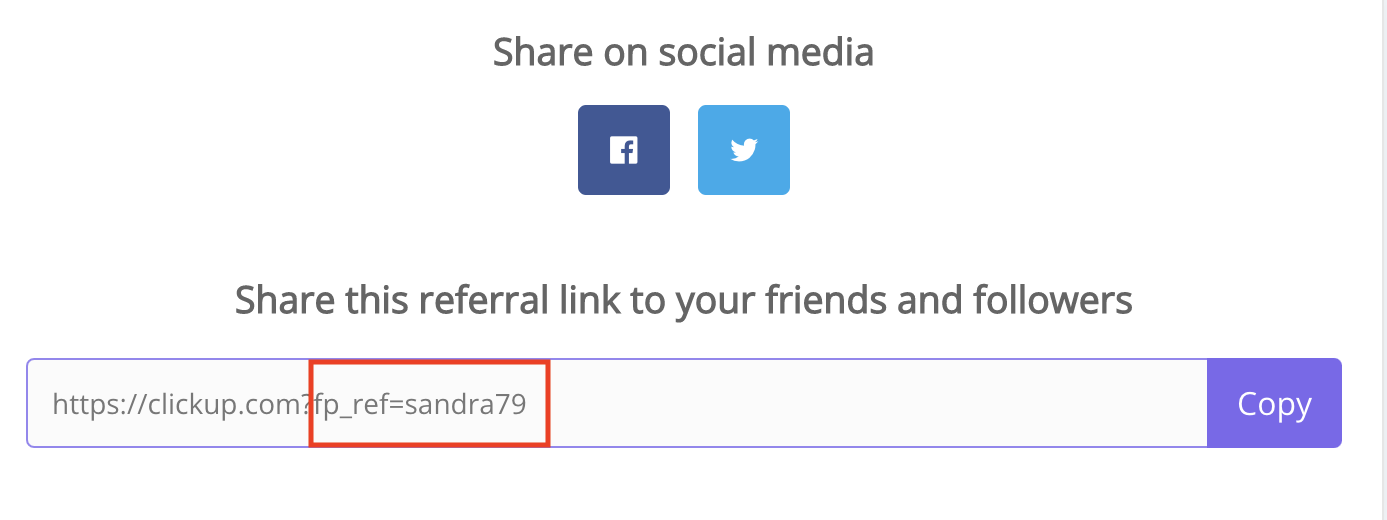
Image source: ClickUp referral program
Like Coinbase, all referrers receive a unique referral link containing the referral code at the end. In this case, the referral code is a combination of letters, numbers, and special characters. It's also personalized as it contains my first name. Referrers can simply copy-paste the link or share it on Facebook and Twitter directly from the landing page.
Airtable is a modern spreadsheet tool with database capabilities. It's simple to use, user-friendly, and lets users quickly create a database. To increase its customer base in a highly competitive market with giants like Wrike and Asana, the company has a fully-functional referral program. Referrers are rewarded with $10 in credit for every successful referral.
The referred customer has to sign up and verify their email in order for the referrer to receive their credit. The referrer can then use the credit to upgrade to a Plus or Pro plan.
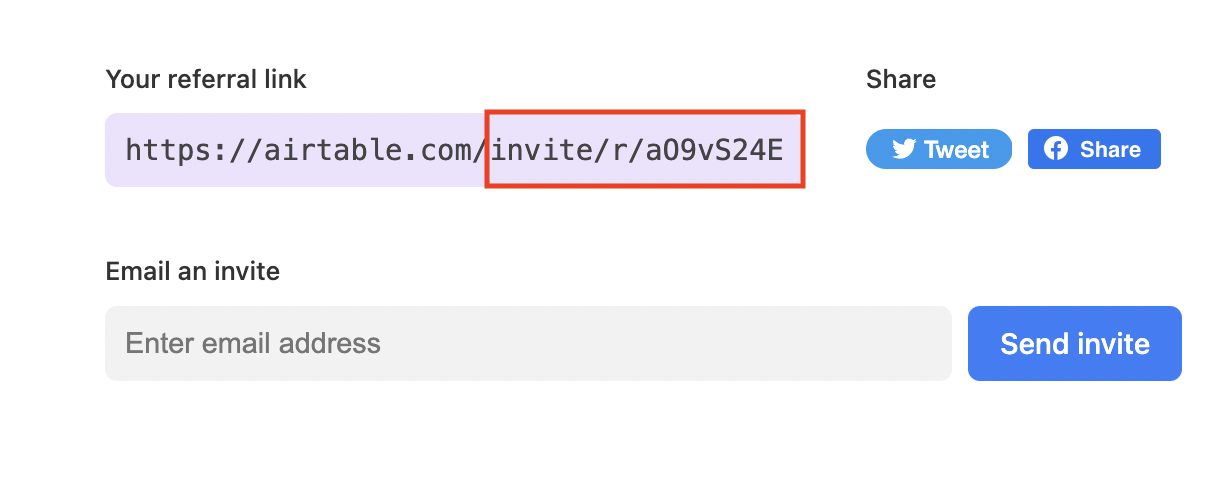
Image source: Airtable referral program
As we can see from the image above, the referral code is contained within the unique referral link that referrers share with their network. Referrers can easily share the link via Twitter or Facebook or send it directly to the referred customer's inbox. The code is not personalized; instead, it's a simple combination of letters and numbers, both upper case and lower case.
Dropbox is our next referral code example and probably one of the most well-known referral programs out there. Thanks to its program, the company managed to obtain a 3900% growth over only 15 months.
Although the referral program is slightly different today, its main inner workings are the same: you earn extra space by inviting your friends to sign up and start using the platform.
The rewards vary depending on the referrer's Dropbox plan. For instance:

Image source: Dropbox referral program
The referral code is a more complex combination of letters and numbers, both lower and upper cases. Luckily, there's no need to memorize the link or manually type it. You can simply email the invite to your friends and family directly from the page or copy-paste the link to your preferred communication channel.
Willful, an online will platform, has a very straightforward two-sided referral program. In short, referrers get a $10 Amazon.ca Gift Card, while referred customers save $20 on any Willful plan.
After a customer purchases a Willful plan, they'll be automatically assigned a unique referral link they can share with their network. The link is easily located on the right-hand side of the Willful dashboard.
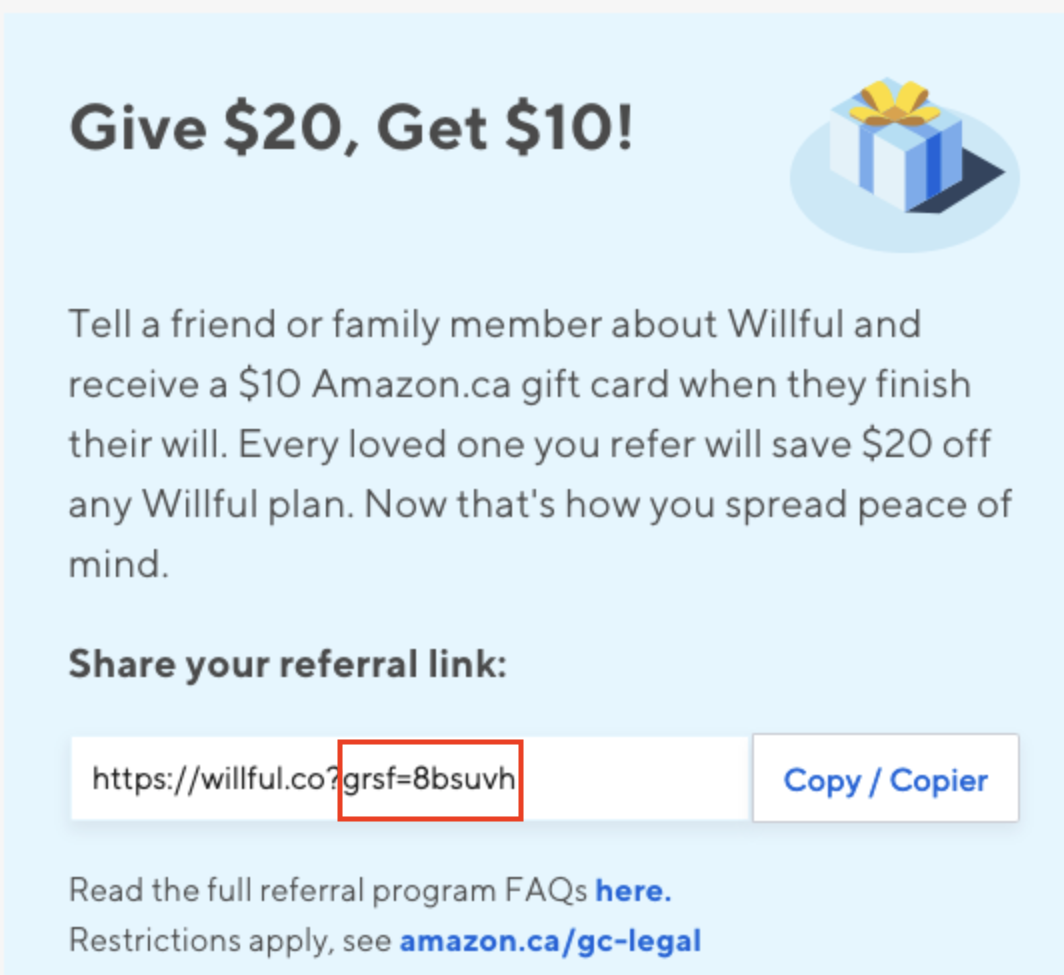
Image source: Willful referral program
As we can see from the example above, the referral code is a combination of letters, numbers, and special characters. Referrers don't have to memorize the code or type it manually. They can simply copy the link and share it instantly with their friends and family.
The Uptick, a weekly finance newsletter, is the last referral code example on our list. The company has integrated its referral program into its newsletter in order to reach more subscribers. The referral program is a milestone program where referrers unlock more rewards as they refer more people. For example:

Image source: Uptick referral program
The referral code is a combination of letters, numbers, and special characters. People can simply copy and send the link or share it via email, Facebook, or text message directly from the landing page.
We finally made it to the end of this extensive post. Hopefully, you're now equipped with the knowledge of what referral codes are and their importance in managing a successful referral program.
We also looked at what referral codes look like in different companies and how they're using referrals to expand their customer base and reward customers for spreading the good word.
Our final tip for you today is to consider investing in referral program software that can automate and streamline the process of managing referrals.
For more information, read our post on why you need a referral management software and explore the best referral program software systems on the market today.
Good luck!

GrowSurf is modern referral program software that helps product and marketing teams launch an in-product customer referral program in days, not weeks. Start your free trial today.
There is no "best" referral marketing strategy: You need to personalize your approach to fit your audience! Here's 10 ways to improve your referral strategy.
Referral programs are a perfect fit for subscription companies. Whether you're a monthly goodie box or a SaaS, referral marketing could be a game changer.
Can reviews boost your referral program results? Reviews are an important part of the buyer process so it's no surprise that they can massively impact programs:
Social referrals are key to word of mouth marketing. This guide to social referrals has expert tips to integrate social media and referral marketing in unity.
Feeling short on time managing your referral program? Learn how to automate your referral marketing program that scales with your business needs.
In this article we cover seven tried-and-true ways to use psychology in your newsletter referral program to get more subscribers.